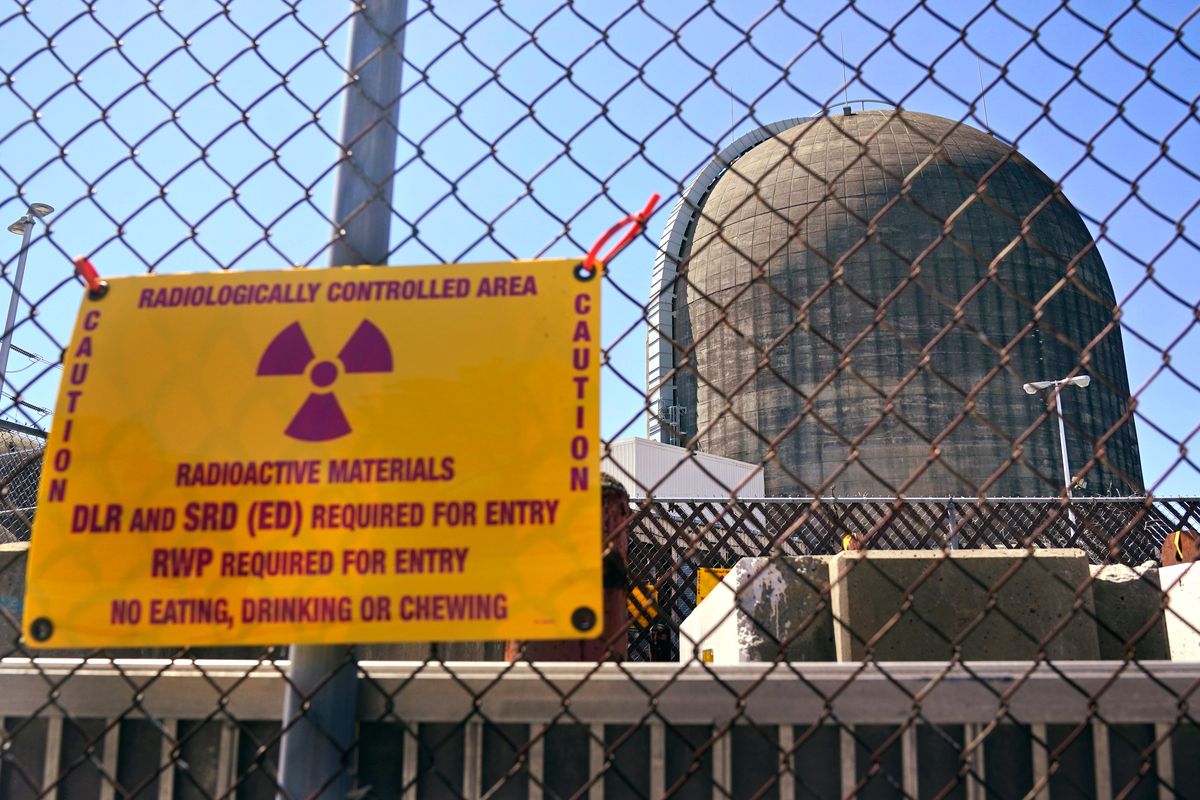Biden launches $6B effort to save distressed nuclear plants

WASHINGTON – The Biden administration is launching a $6 billion effort to rescue nuclear power plants at risk of closing, citing the need to continue nuclear energy as a carbon-free source of power that helps to combat climate change.
A certification and bidding process opened Tuesday for a civil nuclear credit program that is intended to bail out financially distressed owners or operators of nuclear power reactors, the U.S. Department of Energy told The Associated Press exclusively, shortly before the official announcement. It’s the largest federal investment in saving financially distressed nuclear reactors.
Owners or operators of nuclear power reactors that are expected to shut down for economic reasons can apply for funding to avoid closing prematurely. The first round of awards will prioritize reactors that have already announced plans to close.
The second round will be opened up to more economically at-risk facilities. The program was funded through President Joe Biden’s $1 trillion infrastructure deal, which he signed into law in November.
“U.S. nuclear power plants contribute more than half of our carbon-free electricity, and President Biden is committed to keeping these plants active to reach our clean energy goals,” Energy Secretary Jennifer Granholm said in a statement. “We’re using every tool available to get this country powered by clean energy by 2035, and that includes prioritizing our existing nuclear fleet to allow for continued emissions-free electricity generation and economic stability for the communities leading this important work.”
A dozen U.S. commercial nuclear power reactors have closed in the past decade before their licenses expired, largely due to competition from cheaper natural gas, massive operating losses due to low electricity prices and escalating costs, or the cost of major repairs.
This has led to a rise in emissions in those regions, poorer air quality and the loss of thousands of high-paying jobs, dealing an economic blow to local communities, according to the DOE. A quarter or more of the fleet is at risk, the DOE added. The owners of seven operating reactors have already announced plans to retire them through 2025.
Most U.S. nuclear plants were built between 1970 and 1990 and it’s costing more to operate an aging fleet.
California is slated to close its last remaining nuclear power plant, Diablo Canyon, in 2025. Officials there think they can replace it with new solar, wind and battery storage resources, though skeptics have questioned whether California’s all-in renewable plan can work in a state of nearly 40 million people.
The Energy Department intends to accept annual applications for the civil nuclear credit program through fiscal 2031, or until the $6 billion runs out. Nuclear plant owners or operators can bid on credits for financial assistance to keep operating. To qualify, plant owners or operators have to show the reactors are projected to retire for economic reasons and emissions would increase. The department would also determine, with input from the U.S. Nuclear Regulatory Commission, that they can operate safely.
Maria Korsnick, president and chief executive officer of NEI, said she thinks the federal program will level the playing field for nuclear energy and help clear a path to pass even more intensive policies, such as a nuclear production tax credit proposed in Biden’s now-stalled Build Back Better plan.
Democrats have said they hope to resuscitate parts of the social and environmental package and win over voters weary of the two-year-old pandemic and coping with the worst inflation in decades.